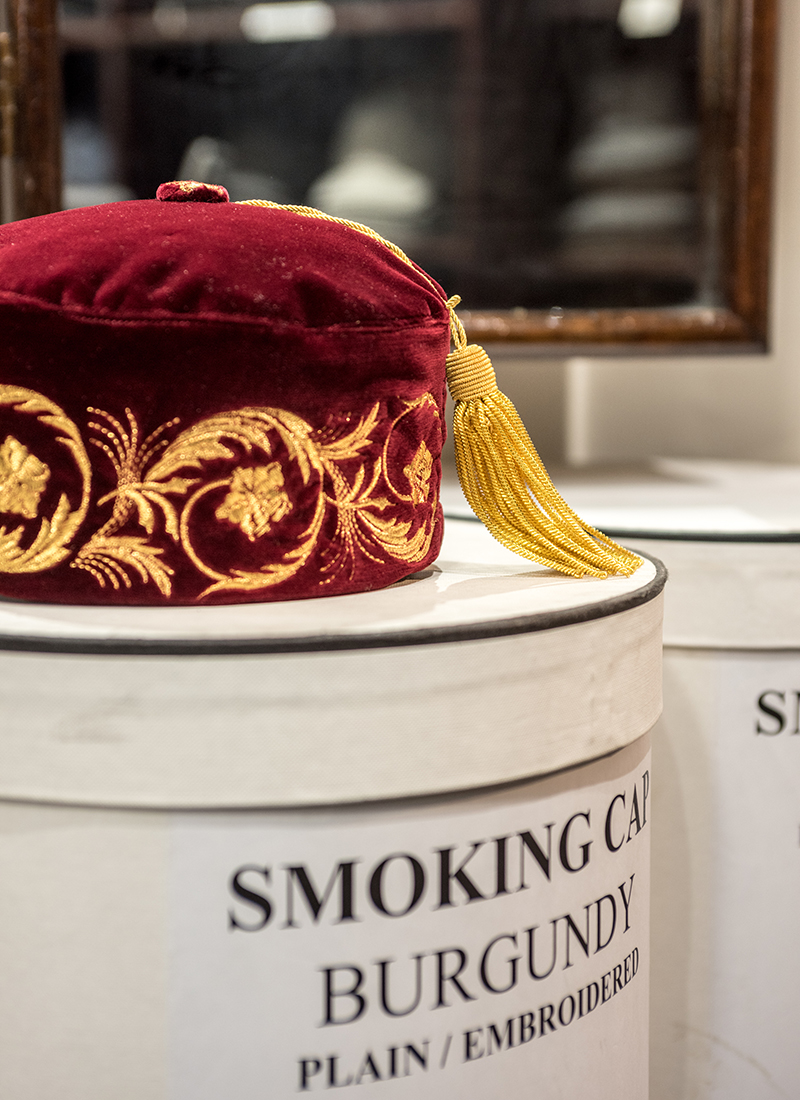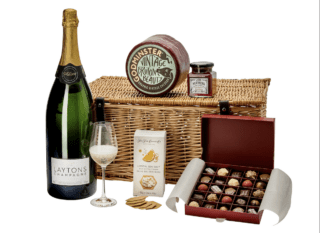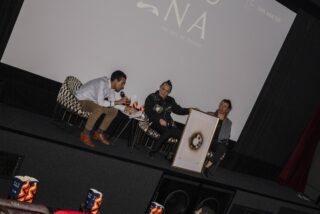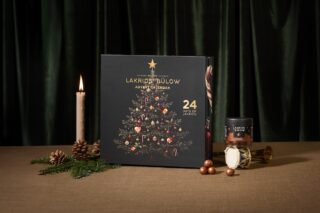This website uses cookies so that we can provide you with the best user experience possible. Cookie information is stored in your browser and performs functions such as recognising you when you return to our website and helping our team to understand which sections of the website you find most interesting and useful.
Mayfair hatters Lock & Co gives Tempus an insight into the oldest hat shop in the world
By Mark O'Flaherty | 7 April 2019 | Style
Lock & Co’s Roger and Lizzie Stephenson tell Tempus about running one of the most enduring family businesses in England
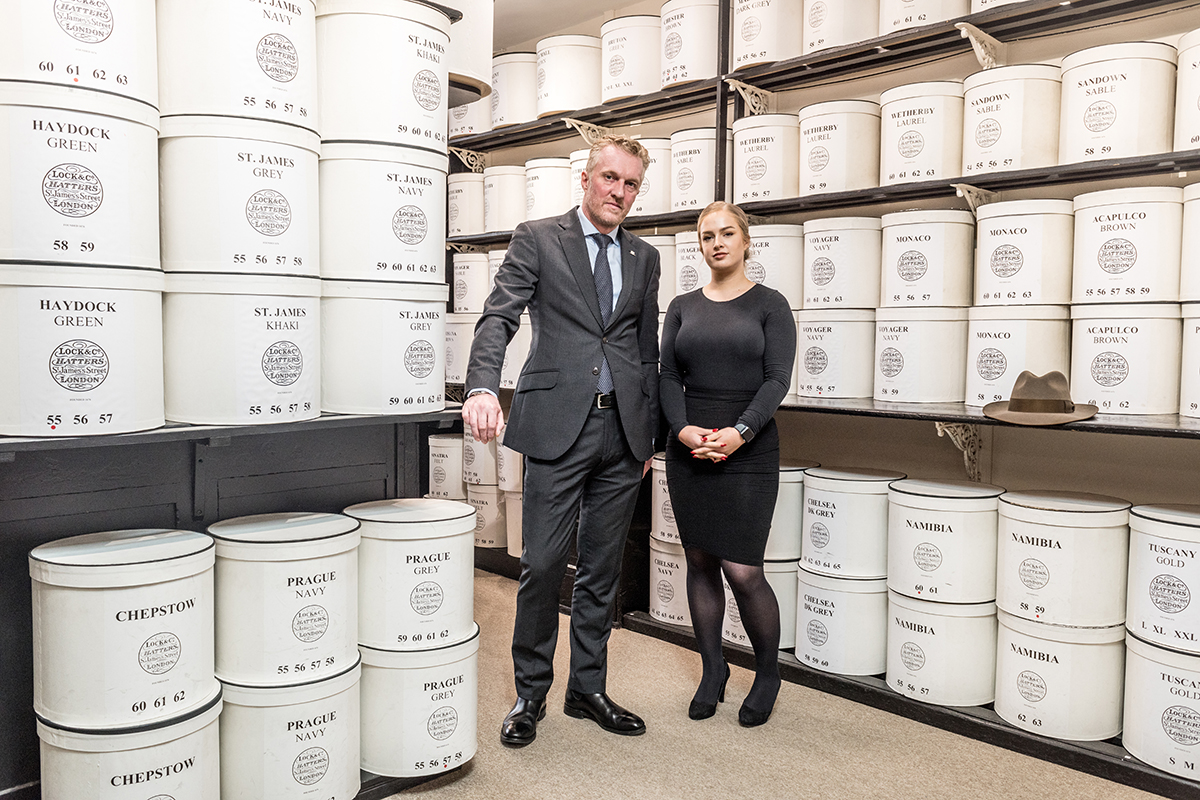
In a world of mass consumerism, multi-generational artisans in Mayfair are keeping the crafts of their ancestors alive. Away from the high gloss of the corporate-owned window displays, with all their conceptual gilded animatronics and operatic set designs, there is an older world of classic bespoke and other craft, much of it still in the hands of the families that founded their businesses one or two centuries ago. There are workshops and archives that have survived world wars and developed a gorgeous patina from the everyday craft that they facilitate. Here, Mark C O'Flaherty explores the world of historic hatters, Lock & Co.
Roger Stephenson, deputy chairman, and Lizzie Stephenson, customer service – seventh- and eighth-generation family members, respectively – give us an insight into running not only the oldest hat shop in the world, but one of the most enduring family businesses in England.
How does being a family-run firm define the culture of the company?
Roger Stephenson: I suppose there’s pride in the business. It’s something which we’ve grown up with – it’s almost in our DNA. As children we were brought to the shop, almost like a rite of passage, to understand the history of our family within the business. We are the second oldest family business in London now; we’re also one of the oldest family businesses in the country, so that’s something we take a lot of pride in. In this day and age, a lot of brands still play on their heritage, but they’re usually parent companies that own a lot of different brands, or an equity firm which basically just bought the name and then tried to brand it as heritage, whereas we’ve got lineage. The business has gone from generation to generation.
What’s your earliest memory of Lock & Co?
Lizzie Stephenson: I remember coming in as a five-year-old child and they tried to put the conformateur on me, which is how they get head shapes. I didn’t want it to go anywhere near my head and everyone in the whole shop was trying to coax me into it – but I didn’t want to!
Do you feel a great level of responsibility to make the business a success because of its family heritage?
RS: There is a responsibility. You feel as if it’s your job to leave the business in good fettle for the next generation. Often the idea of a lot of businesses is to build them with a view to sell them, but that isn’t on the agenda here. When it’s the end of my tenure, I hope that I’ve passed the business on to the next generation in better shape than when I started.

Has there been much change in the running of the business over the last 20 years?
RS: Yes and no. In terms of change in the business, yes, substantially. When I first started 29 years ago, the mentality was, ‘We’ve always done it this way’, and the company was a little resistant to change. When you walk in here, it doesn’t look like much has changed, but behind the scenes, it’s a different business now than it was 20 years ago. It’s a lot more progressive and we’re a lot more seasonally focused. Now, we launch spring/summer and winter ranges each season, whereas before we only had our core range hats which just sold and sold.
What has evolved in regard to the production of the hats?
RS: In terms of the workshop and production, nothing. All of our hats are still very much traditionally made but a lot of the main manufacturing bases in England have gone, so where the product is sourced has changed. It’s still done in the same way, with steam and blocks and presses, and the tweed caps are still made in exactly the same way. I’m very proud that, in a mass- produced world, we’re still using very traditional crafts to produce the hats. In terms of materials and style, however, things have changed quite drastically – for instance, 20 years ago we never would’ve thought about selling a Lock baseball hat. We now offer a very wide range of styles. If you want a smoking cap, you can come to Lock’s. If you want a fez or a pith helmet, or even one of the modern Dover watch caps, you can come to Lock’s. We’ve been famous for innovation ever since we invented the bowler hat in 1850.
What are the biggest changes you’ve noticed in your customers?
RS: Demographic. If you looked at our customer 25 years ago, they’d probably be 50-plus and very traditional. Hats have become popular with the younger demographic so we’re getting a younger, more fashionable crowd in. Our average age group now is probably 30 to 50, which is a drastic change.
Why do you think this is?
LS: I think it’s probably the fact that more celebrities are seen in hats. Hats are not seen as a necessity, but something you wear if you want to look very smart. It’s back to an accessory. I think the way men shop has changed as well. It used to be that women would look at women they admired and want to copy the style, but now, men are searching out street-style celebrities and seeing what they’re wearing, and that brings them into the shop because they want to replicate that kind of style.
Words and photography by Mark C O'Flaherty
